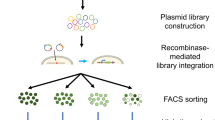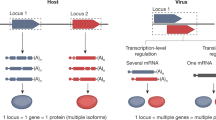Abstract
A Biochemical Pharmacology Discussion Group Conference, was held at the headquarters of the New York Academy of Sciences on December 4, 2001 as part of an ongoing series designed to highlight and review areas important to modern drug development (Figure 1). Briefly introduced by Tom Kost (GlaxoSmithKline) and Michael Lotze (University of Pittsburgh), the focus was on the intersection of genomics, proteomics, and now “viromics.” The latter term refers to the use of viruses and viral gene transfer to explore the complexity arising from the vast array of new targets available from the human and murine genomes. Indeed, access to large numbers of genes using viral vectors is a key tool for drug discovery and drug delivery. With 38,000 genes identified within the human genome, only 5000 are considered readily druggable. Generating tools such as these to validate targets represents a major part of the armamentarium of the postgenomic scientist. During the last 12 years alone, there have been over 26,000 publications on virus vectors. Many of them have been found useful in target validation, assay development, and evaluation in in vivo models and gene therapy. Thus, there is now an extensive knowledge base for several viral vectors, with unique attributes within each of them providing versatility, efficiency, and ease of use. The individual scientists presenting at the meeting illustrated many of the unique and useful characteristics of such vector systems including retrovirus, adenovirus, herpes virus, simbis virus, and baculovirus.
This is a preview of subscription content, access via your institution
Access options
Subscribe to this journal
Receive 12 print issues and online access
$259.00 per year
only $21.58 per issue
Buy this article
- Purchase on Springer Link
- Instant access to full article PDF
Prices may be subject to local taxes which are calculated during checkout

Similar content being viewed by others
References
Grignani F, Kinsella T, Mencarelli A et al. High-efficiency gene transfer and selection of human hematopoietic progenitor cells with a hybrid EBV/retroviral vector expressing the green fluorescence protein Cancer Res 1998 58: 14–19
Lorens JB, Bennett MK, Pearsall DM et al. Retroviral delivery of peptide modulators of cellular functions Mol Ther 2000 1: 5 Pt 1 438–447
Xu X, Leo C, Jang Y et al. Dominant effector genetics in mammalian cells Nat Genet 2001 27: 23–29
Gilboa E, Goff S, Shields A, Yoshimura F, Mitra S, Baltimore D . In vitro synthesis of a 9 kbp terminally redundant DNA carrying the infectivity of Moloney murine leukemia virus Cell 1979 16: 863–874
Kinoshita S, Chen BK, Kaneshima H, Nolan GP . Host control of HIV-1 parasitism in T cells by the nuclear factor of activated T cells Cell 1998 95: 595–604
Hofmann C, Sandig V, Jennings G, Rudolph M, Schlag P, Strauss M . Efficient gene transfer into human hepatocytes by baculovirus vectors Proc Natl Acad Sci USA 1995 92: 10099–10103
Boyce FM, Bucher NL . Baculovirus-mediated gene transfer into mammalian cells Proc Natl Acad Sci USA 1996 93: 2348–2352
Kost TA, Condreay JP . Recombinant baculoviruses as mammalian cell gene-delivery vectors Trends Biotechnol 2002 20: 173–180
Condreay JP, Witherspoon SM, Clay WC, Kost TA . Transient and stable gene expression in mammalian cells transduced with a recombinant baculovirus vector Proc Natl Acad Sci USA 1999 96: 127–132
Pieroni L, Maione D, La Monica N . In vivo gene transfer in mouse skeletal muscle mediated by baculovirus vectors Hum Gene Ther 2001 12: 871–881
Samaniego LA, Wu N, DeLuca NA . The herpes simplex virus immediate-early protein ICP0 affects transcription from the viral genome and infected-cell survival in the absence of ICP4 and ICP27 J Virol 1997 71: 4614–4625
Fink DJ, DeLuca NA, Yamada M, Wolfe DP, Glorioso JC . Design and application of HSV vectors for neuroprotection Gene Ther 2000 7: 115–119
Glorioso JC, Fink DJ . Use of HSV vectors to modify the nervous system Curr Opin Drug Discovery Dev 2002 5: 289–295
Koller D, Ruedl C, Loetscher M et al. A high-throughput alphavirus-based expression cloning system for mammalian cells Nat Biotechnol 2001 19: 851–855
Harvey BG, Leopold PL, Hackett NR et al. Airway epithelial CFTR mRNA expression in cystic fibrosis patients after repetitive administration of a recombinant adenovirus J Clin Invest 1999 104: 1245–1255
Yotnda P, Chen DH, Chiu W et al. Bilamellar cationic liposomes protect adenovectors from preexisting humoral immune responses Mol Ther 2002 5: 233–241
Rosengart TK, Lee LY, Patel SR et al. Six-month assessment of a phase I trial of angiogenic gene therapy for the treatment of coronary artery disease using direct intramyocardial administration of an adenovirus vector expressing the VEGF121 cDNA Ann Surg 1999 230: 466–470 discussion 470–472
Kianmanesh A, Hackett NR, Lee JM, Kikuchi T, Korst RJ, Crystal RG . Intratumoral administration of low doses of an adenovirus vector encoding tumor necrosis factor alpha together with naive dendritic cells elicits significant suppression of tumor growth without toxicity Hum Gene Ther 2001 12: 2035–2049
Shimizu T, Berhanu A, Redlinger RE Jr, Watkins S, Lotze MT, Barksdale EM Jr . Interleukin-12 transduced dendritic cells induce regression of established murine neuroblastoma J Pediatr Surg 2001 36: 1285–1292
Tanaka F, Hashimoto W, Okamura H, Robbins PD, Lotze MT, Tahara H . Rapid generation of potent and tumor-specific cytotoxic T lymphocytes by interleukin 18 using dendritic cells and natural killer cells Cancer Res 2000 60: 4838–4844
Lotze MT, Thomson AW . In the medium is the message: cytokines and dendrikines regulate immune reactivity Nat Rev Immunol In press
Author information
Authors and Affiliations
Corresponding author
Rights and permissions
About this article
Cite this article
Lotze, M., Kost, T. Viruses as gene delivery vectors: Application to gene function, target validation, and assay development. Cancer Gene Ther 9, 692–699 (2002). https://doi.org/10.1038/sj.cgt.7700493
Received:
Published:
Issue Date:
DOI: https://doi.org/10.1038/sj.cgt.7700493
Keywords
This article is cited by
-
Magnetically guided virus stamping for the targeted infection of single cells or groups of cells
Nature Protocols (2019)
-
Application of viromics: a new approach to the understanding of viral infections in humans
VirusDisease (2017)
-
Baculovirus: an Insect-derived Vector for Diverse Gene Transfer Applications
Molecular Therapy (2013)
-
Cancer Gene Therapy: The power of negative thinking
Gene Therapy (2006)



